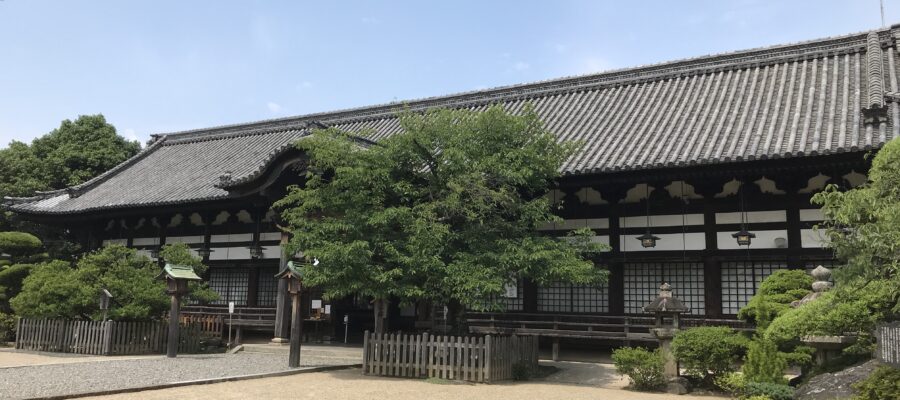応神天皇陵に隣接する神社
古市古墳群で一番大きな応神天皇陵古墳に隣接するのが、この誉田(こんだ)八幡宮です。もちろん主祭神として応神天皇をお祀りしています。歴代天皇の行幸を仰ぐこと数回、また鎌倉時代以降の各時代の将軍より崇敬を受けてきた神社です。
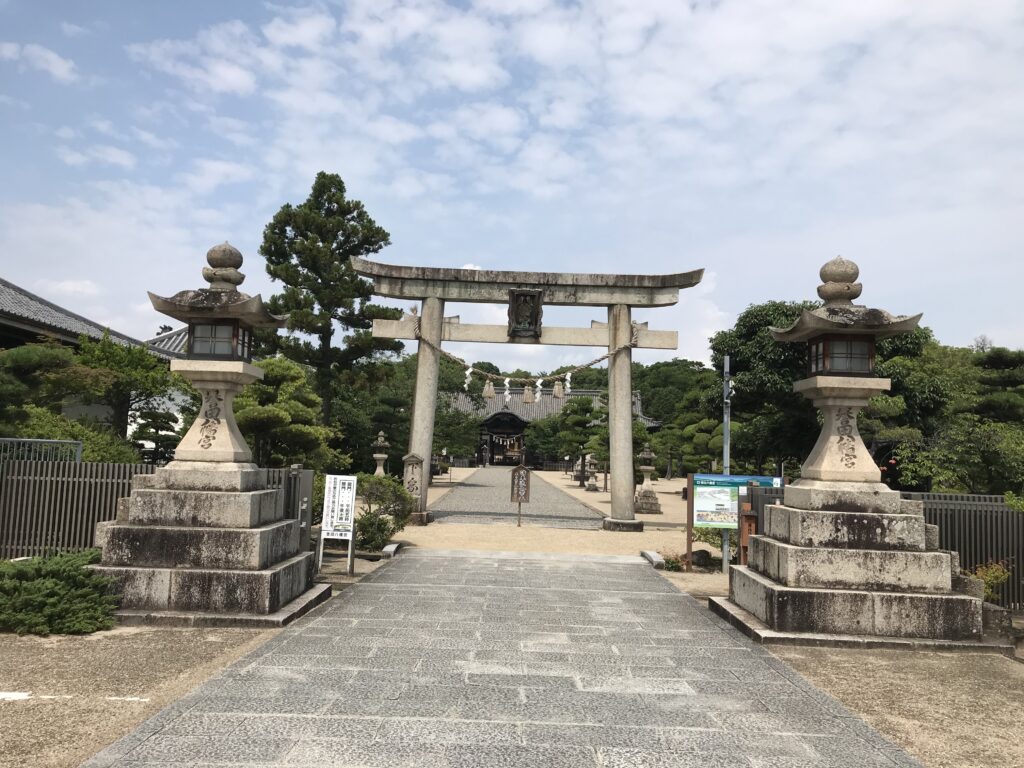
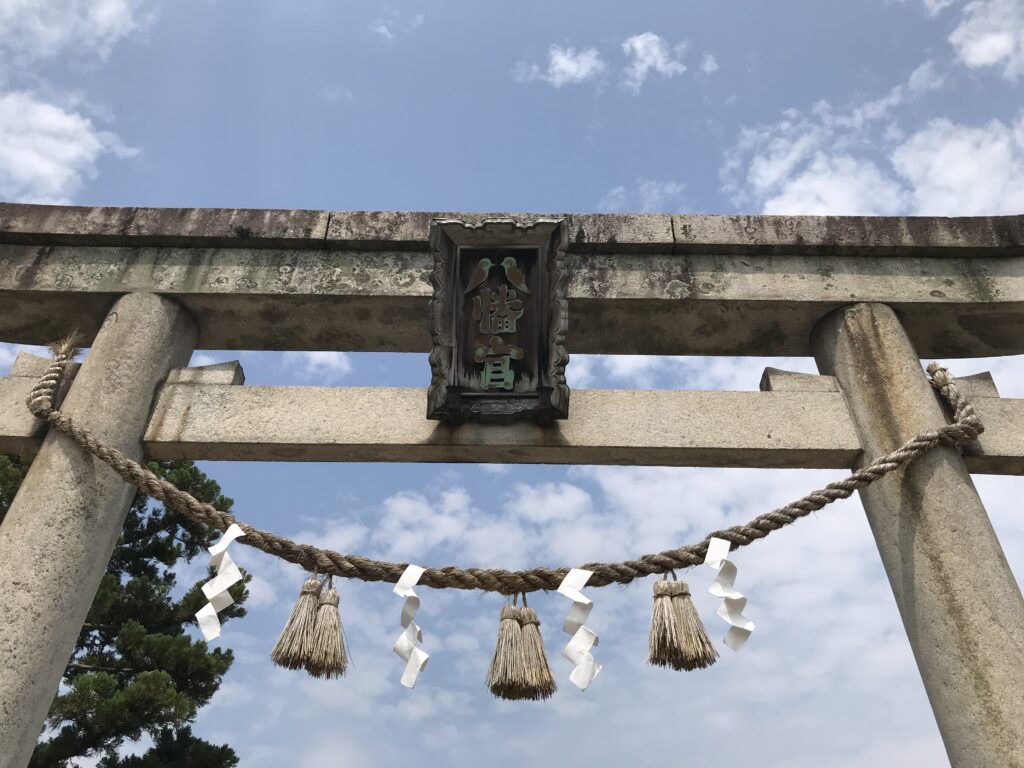
古墳の近くとはいえ、民家が密集している中にある神社です。ここ数年、ある企業さんへの研修プログラムでは、古墳をテーマにして地域振興を考えています。その中の実地見学として、地元のガイドさんに研修生を誉田八幡宮にもご案内いただきました。
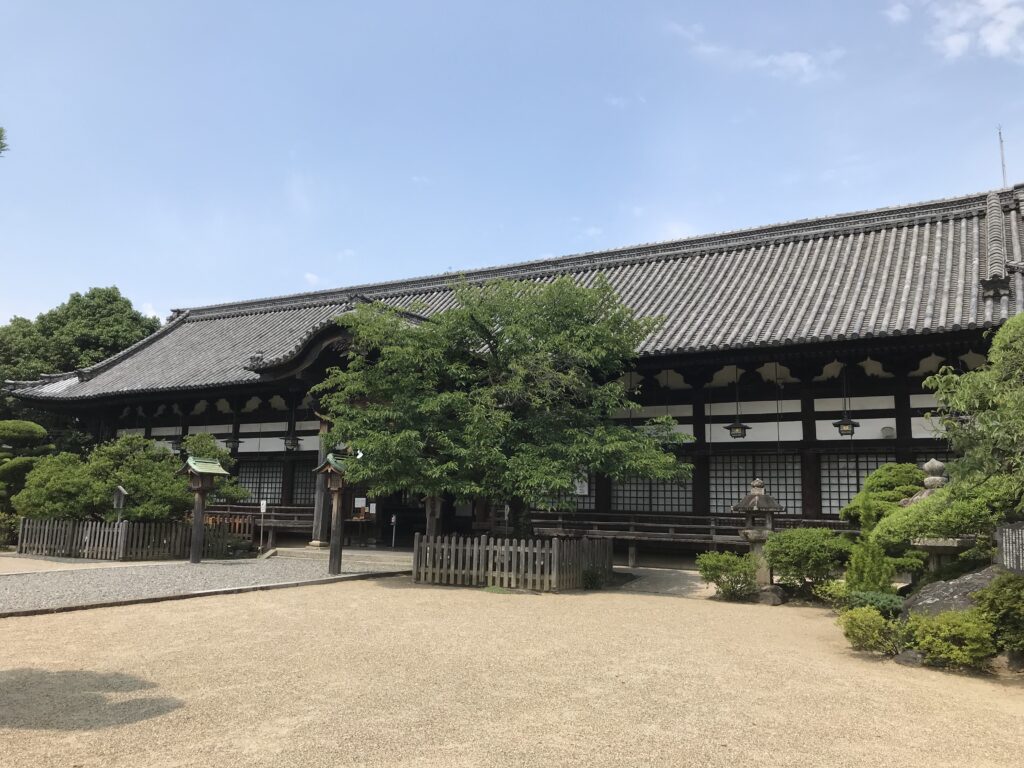
神輿が御陵まで渡御する
この神社は、毎年9月15日に行う秋の例祭において、神輿を応神天皇陵へ渡御します。昔は、境内から天皇陵に通じる参道上にある方生橋と呼ばれる太鼓形をした石橋の上を、神輿を担いで渡御していました。写真を見てもお分かりのように、かなり傾斜がきつく、歩きにくそうな形状の橋です。
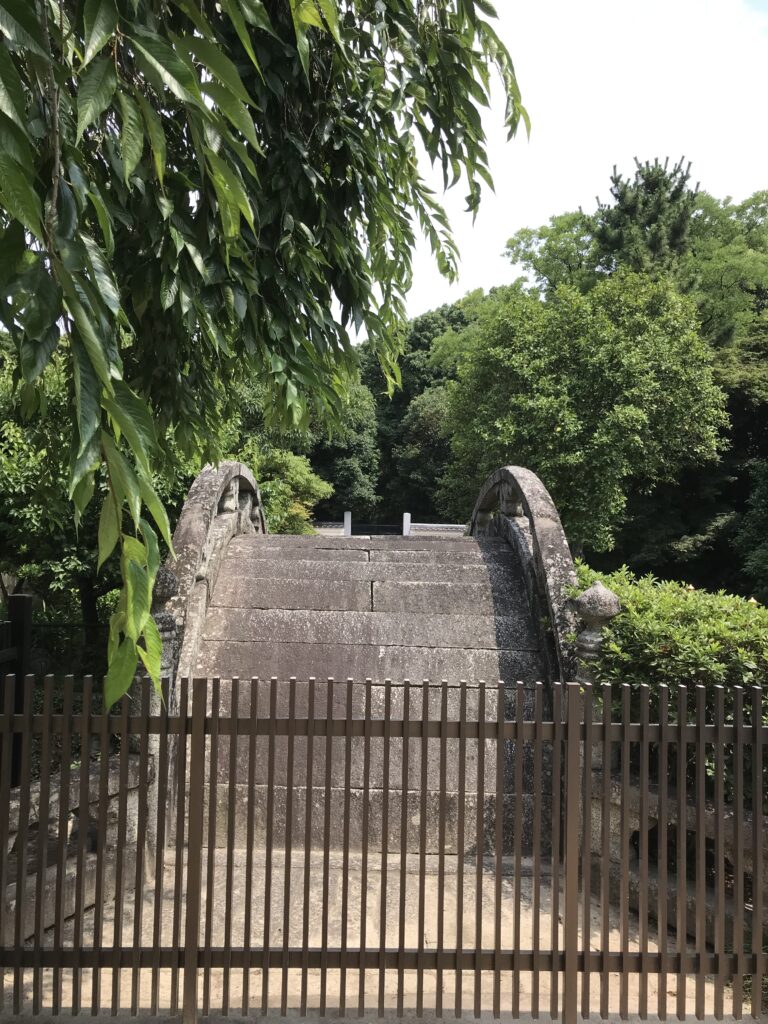
現在は、この橋の横に平らな橋が架かっています。これですと、安心して渡れそうです。そして、渡御する先も、現在は御陵の外堤までですが、古くには、御陵の後円部頂上まで神輿が渡されていました。
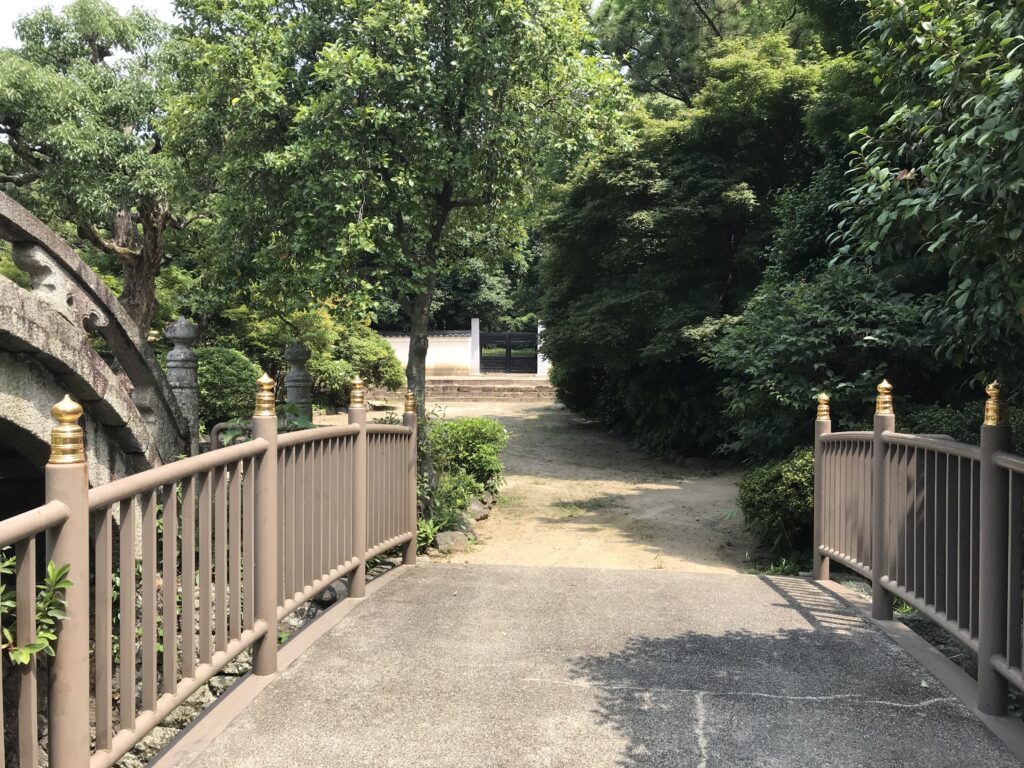
昔は墳丘の上にもお社
昔の絵図を見ると、後円部の頂上まで階段らしきものが続き、頂点部にお宮があったことがわかります。墳丘そのものが神社の境内の一部だったようです。その時代に登ってみたかったと思います。(完)
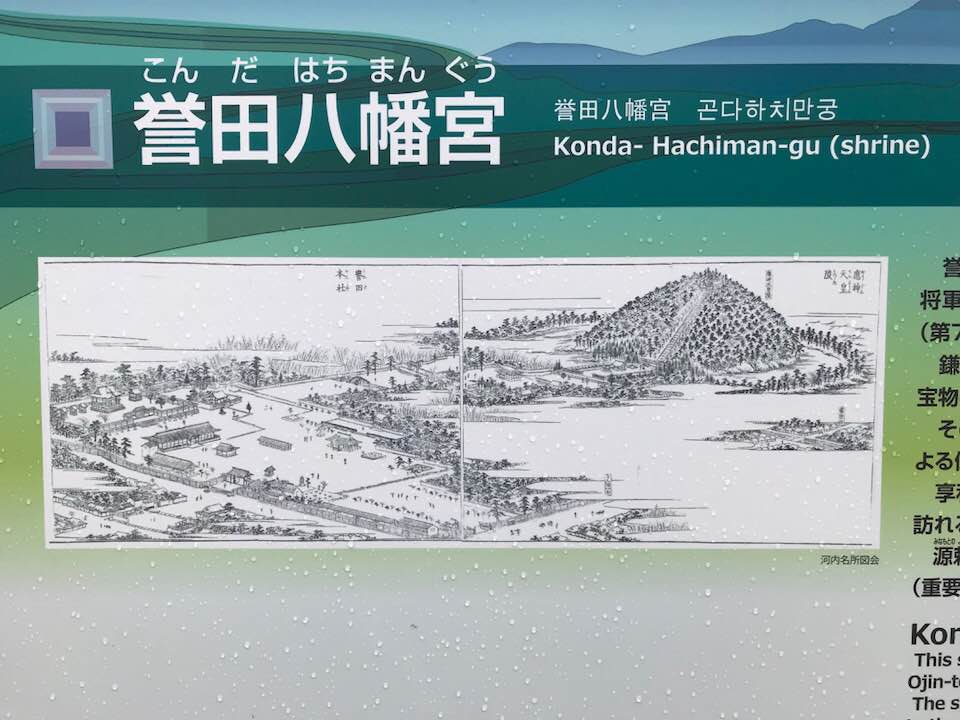
誉田八幡宮の御朱印
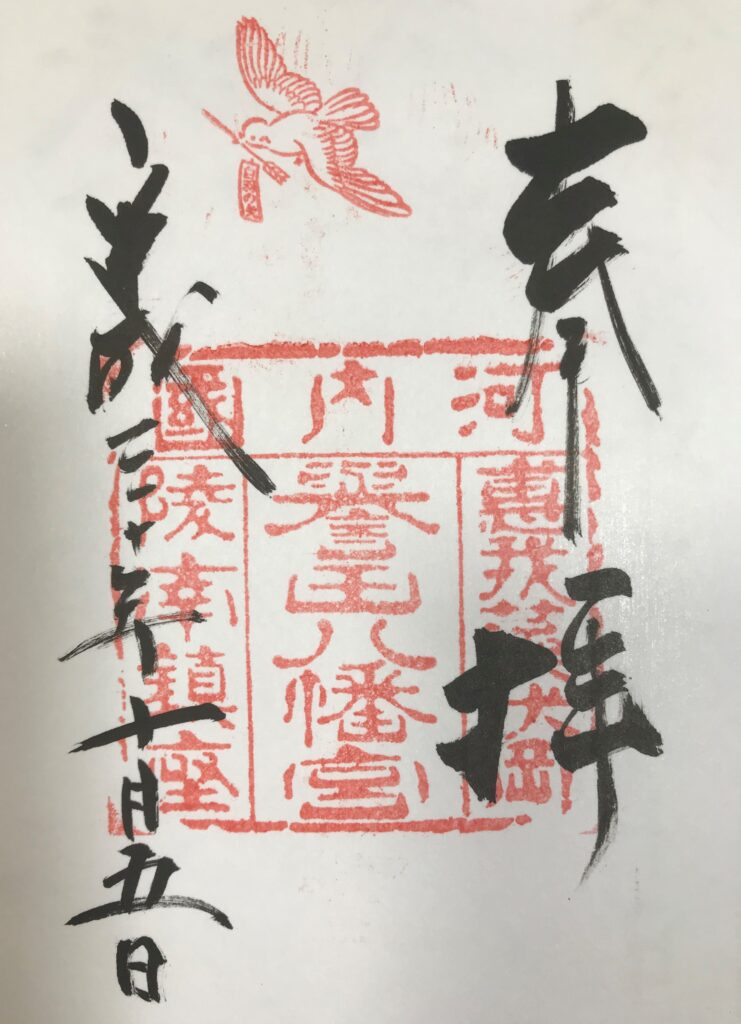
誉田八幡宮が紹介されている書籍
「ザ・古墳群」に誉田八幡宮のことが紹介されています。
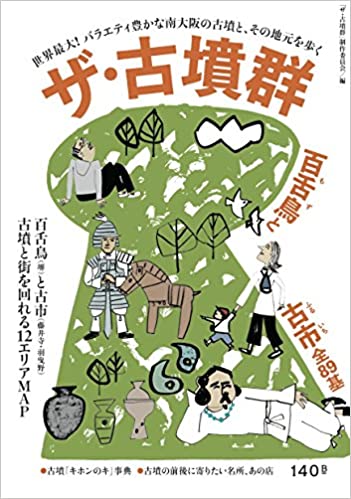
ザ・古墳群 百舌鳥と古市全89基 [ 「ザ・古墳群」制作委員会 ]
価格:1,650円
(2021/5/31 17:23時点)
感想(0件)
Konda Hachimangu Shrine (English)
Shrine adjacent to Emperor Ojin’s Mausoleum
The Konda Hachimangu Shrine is located next to the Emperor Ojin Mausoleum, the largest tomb in the Furuichi Tumulus Group. Of course, Emperor Ojin is enshrined as the main deity. The shrine has been visited several times by successive emperors and has been revered by the shoguns of each era since the Kamakura period.
Even though it is near the ancient tomb, the shrine is located in the middle of a dense cluster of houses. For the past few years, we have been using the ancient tombs as the theme for a training program for a company to promote the local community. As a part of the program, we had a local guide take the trainees to Konda Hachimangu Shrine as a field trip.
The portable shrine is carried to the Imperial Mausoleum.
This shrine carries a portable shrine to the Emperor Ojin’s Mausoleum during the annual autumn festival held on September 15. In the old days, people used to carry the “mikoshi (portable shrine)” on a stone bridge in the shape of a drum called Hojo-bashi, which is located on the approach from the shrine grounds to the Emperor’s Mausoleum. As you can see from the photo, the slope of the bridge is quite steep, making it difficult to walk on.
There is now a flat bridge beside this one. With this bridge, it seems that we can cross without anxiety. As for the destination of the procession, it is currently to the outer bank of the mausoleum, but in the old days, the portable shrine was carried to the top of the rear part of the mausoleum.
There used to be a shrine on top of the mound.
An old drawing shows that there was a stairway-like structure leading up to the top of the rear circle, and that there was a shrine at the top. The mound itself seems to have been part of the shrine grounds. I would have liked to have climbed it in that era. (End)
Sanctuaire Konda Hachimangu (français)
Sanctuaire adjacent au mausolée de l’empereur Ojin
Le sanctuaire Konda Hachimangu est situé à côté du mausolée de l’empereur Ojin, le plus grand tombeau du groupe des tumulus de Furuichi. Bien entendu, l’empereur Ojin y est consacré en tant que divinité principale. Le sanctuaire a été visité plusieurs fois par les empereurs successifs et a été vénéré par les shoguns de chaque époque depuis la période Kamakura.
Bien qu’il se trouve à proximité d’une tombe ancienne, le sanctuaire est situé au milieu d’un groupe dense de maisons. Ces dernières années, nous avons utilisé les tombes anciennes comme thème d’un programme de formation pour une entreprise afin de promouvoir la communauté locale. Dans le cadre de ce programme, nous avons demandé à un guide local d’emmener les stagiaires au sanctuaire de Konda Hachimangu pour une visite de terrain.
La châsse portative est transportée au Mausolée impérial.
Ce sanctuaire transporte une châsse portable jusqu’au mausolée de l’empereur Ojin pendant le festival annuel d’automne qui a lieu le 15 septembre. Autrefois, les gens avaient l’habitude de transporter le “mikoshi (autel portable)” sur un pont de pierre en forme de tambour appelé Hojo-bashi, qui se trouve à l’approche du mausolée de l’empereur. Comme vous pouvez le voir sur la photo, la pente du pont est assez raide, ce qui le rend difficile à emprunter.
Il y a maintenant un pont plat à côté de celui-ci. Avec ce pont, il semble que l’on puisse traverser sans inquiétude. Quant à la destination de la procession, elle se trouve actuellement sur la rive extérieure du mausolée, mais autrefois, la châsse portative était portée au sommet de la partie arrière du mausolée.
Il y avait un sanctuaire au sommet du monticule.
Un vieux dessin montre qu’il y avait une structure en forme d’escalier menant au sommet du cercle arrière, et qu’il y avait un sanctuaire au sommet. Le monticule lui-même semble avoir fait partie de l’enceinte du sanctuaire. J’aurais aimé l’escalader à cette époque. (Fin)
